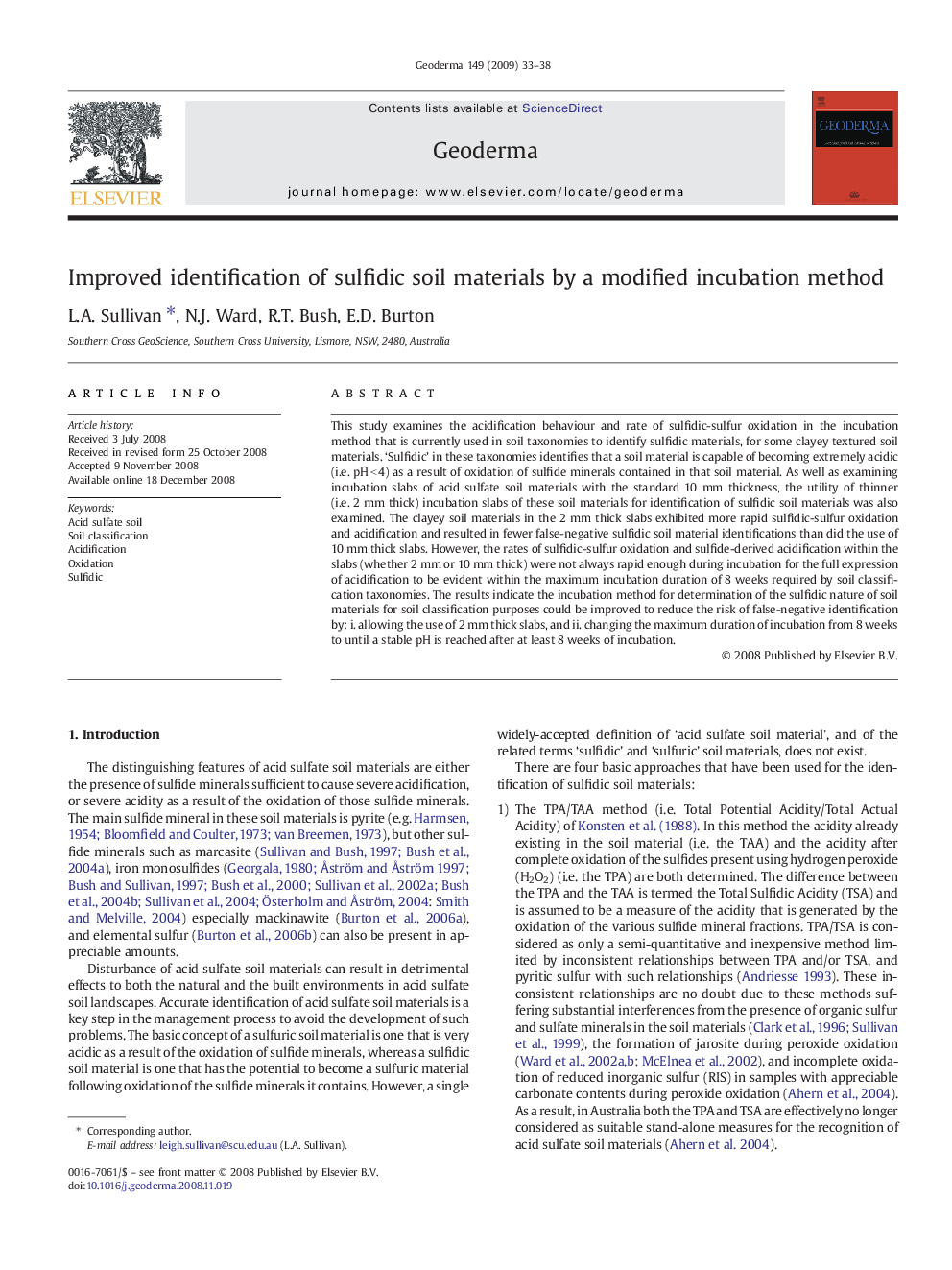| Article ID | Journal | Published Year | Pages | File Type |
|---|---|---|---|---|
| 4574851 | Geoderma | 2009 | 6 Pages |
This study examines the acidification behaviour and rate of sulfidic-sulfur oxidation in the incubation method that is currently used in soil taxonomies to identify sulfidic materials, for some clayey textured soil materials. ‘Sulfidic’ in these taxonomies identifies that a soil material is capable of becoming extremely acidic (i.e. pH < 4) as a result of oxidation of sulfide minerals contained in that soil material. As well as examining incubation slabs of acid sulfate soil materials with the standard 10 mm thickness, the utility of thinner (i.e. 2 mm thick) incubation slabs of these soil materials for identification of sulfidic soil materials was also examined. The clayey soil materials in the 2 mm thick slabs exhibited more rapid sulfidic-sulfur oxidation and acidification and resulted in fewer false-negative sulfidic soil material identifications than did the use of 10 mm thick slabs. However, the rates of sulfidic-sulfur oxidation and sulfide-derived acidification within the slabs (whether 2 mm or 10 mm thick) were not always rapid enough during incubation for the full expression of acidification to be evident within the maximum incubation duration of 8 weeks required by soil classification taxonomies. The results indicate the incubation method for determination of the sulfidic nature of soil materials for soil classification purposes could be improved to reduce the risk of false-negative identification by: i. allowing the use of 2 mm thick slabs, and ii. changing the maximum duration of incubation from 8 weeks to until a stable pH is reached after at least 8 weeks of incubation.
